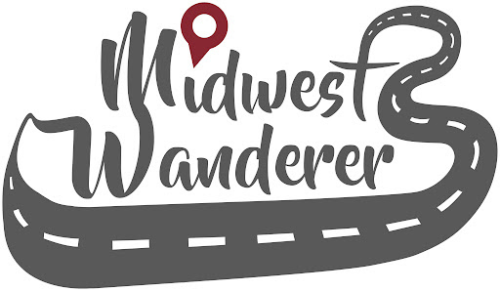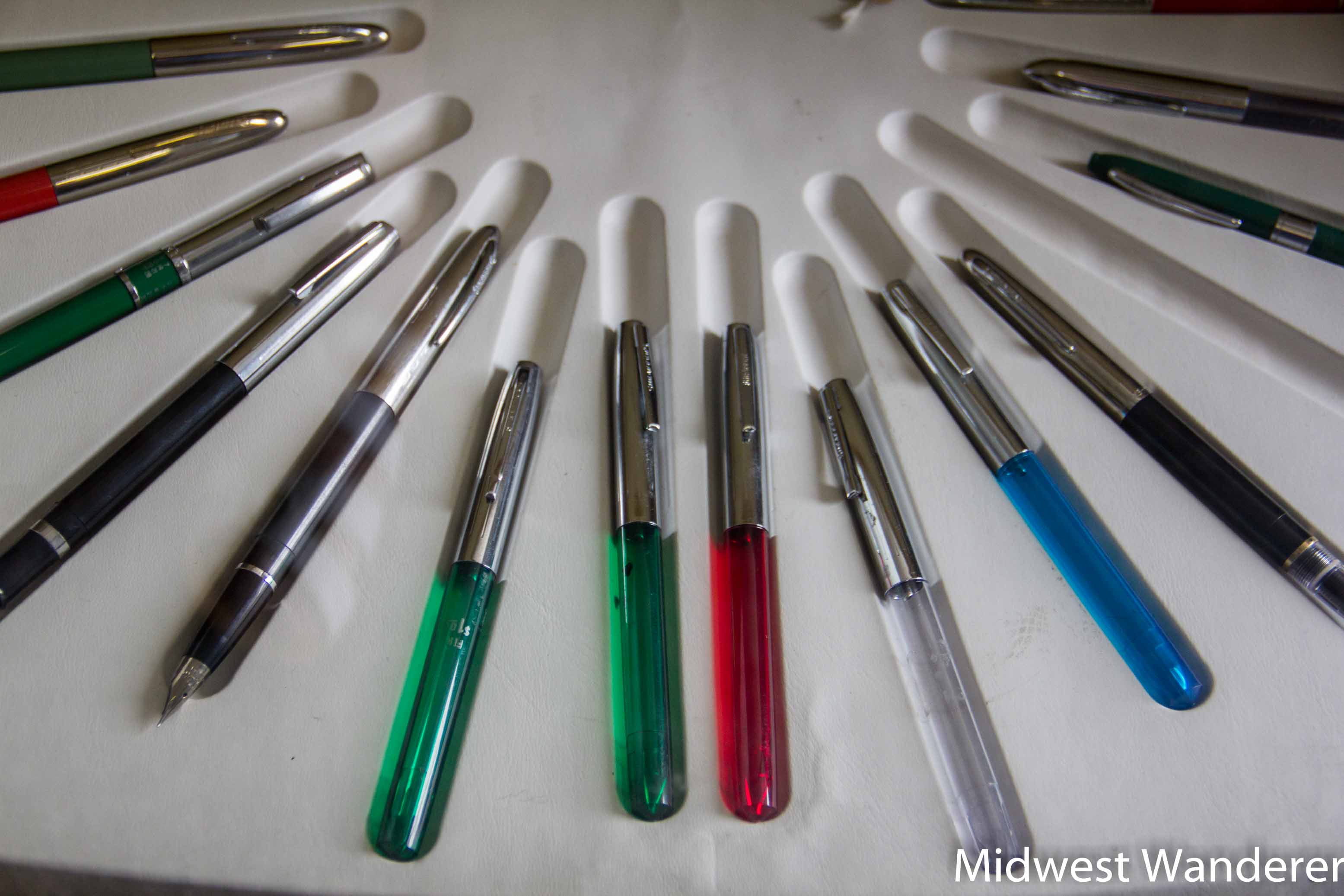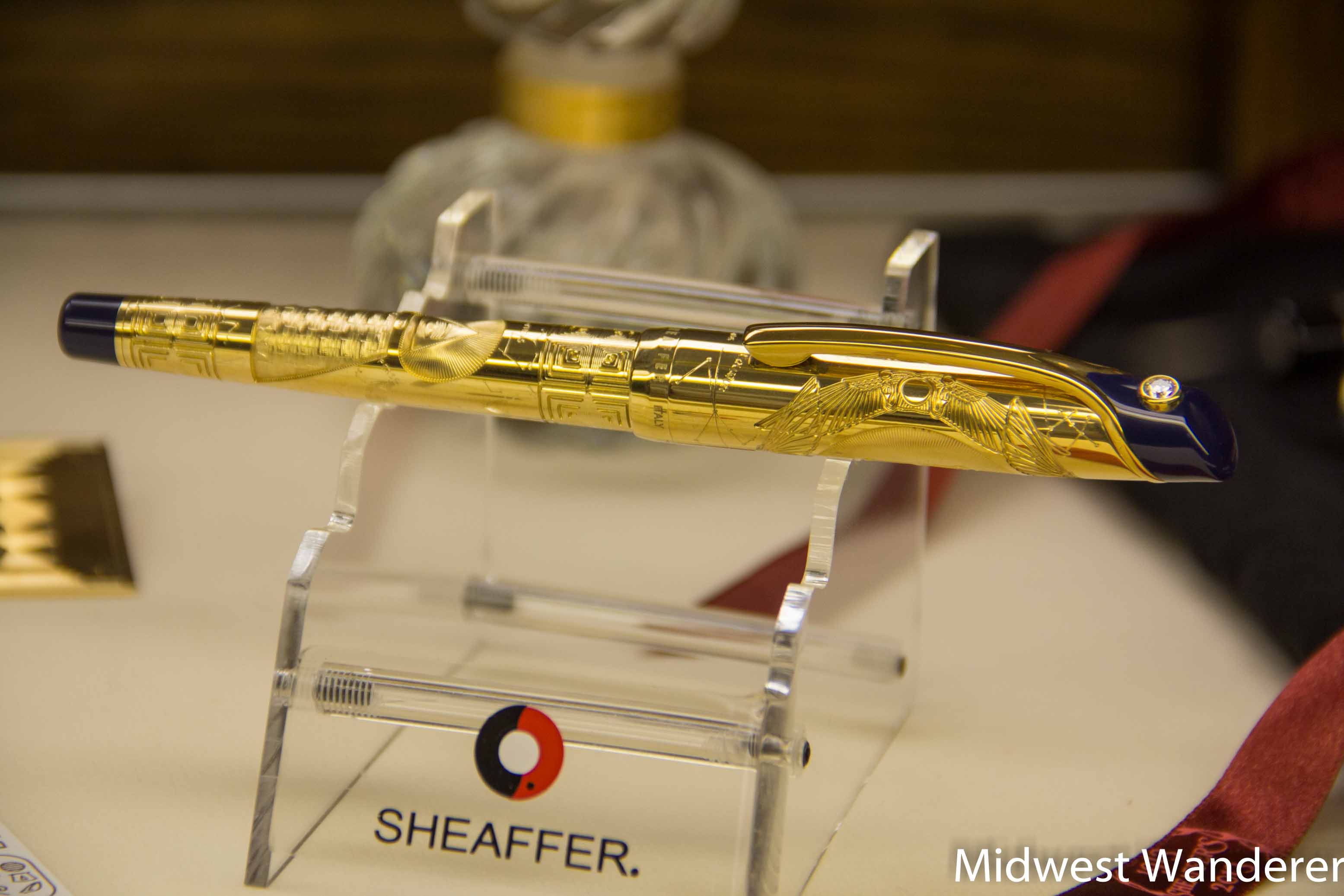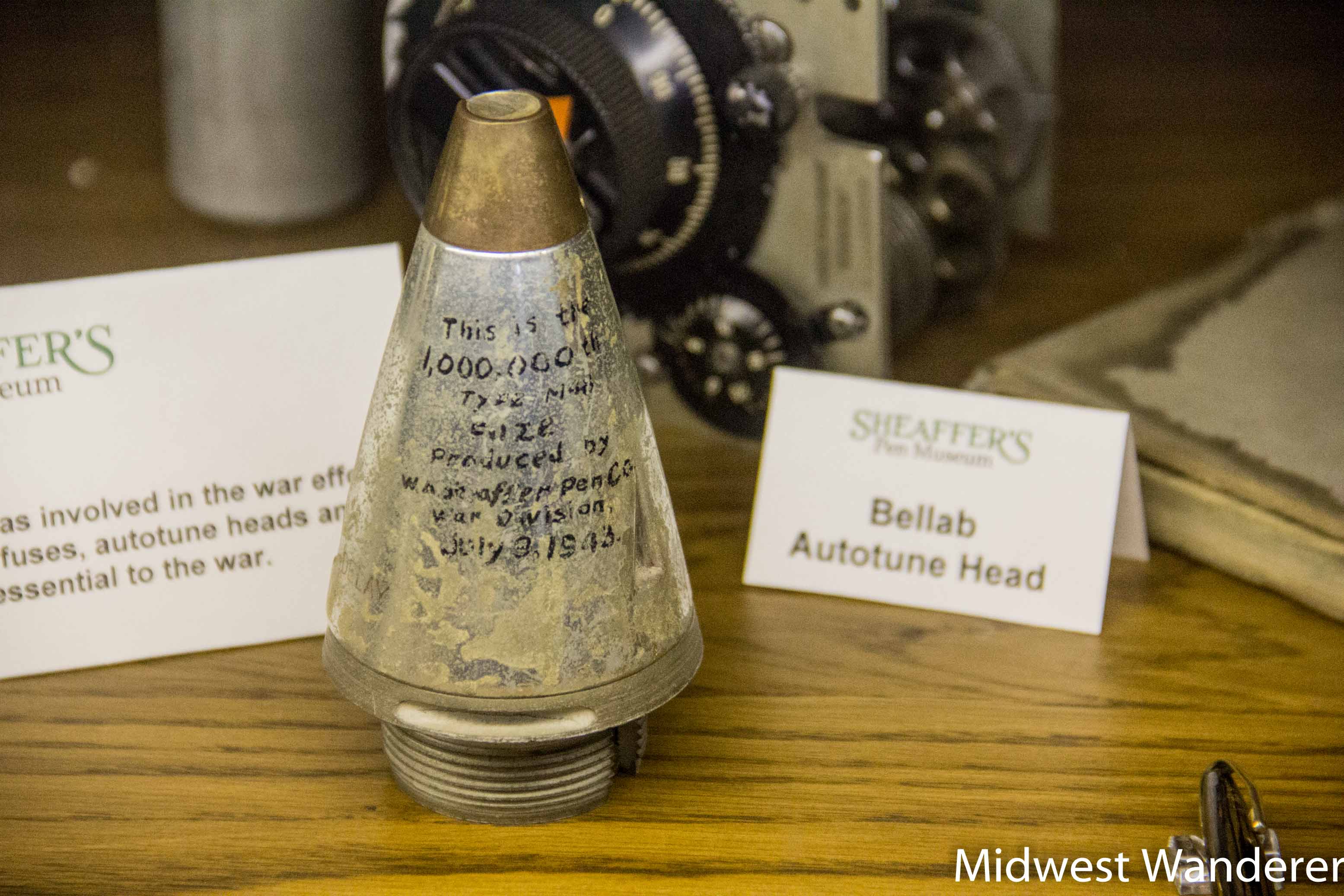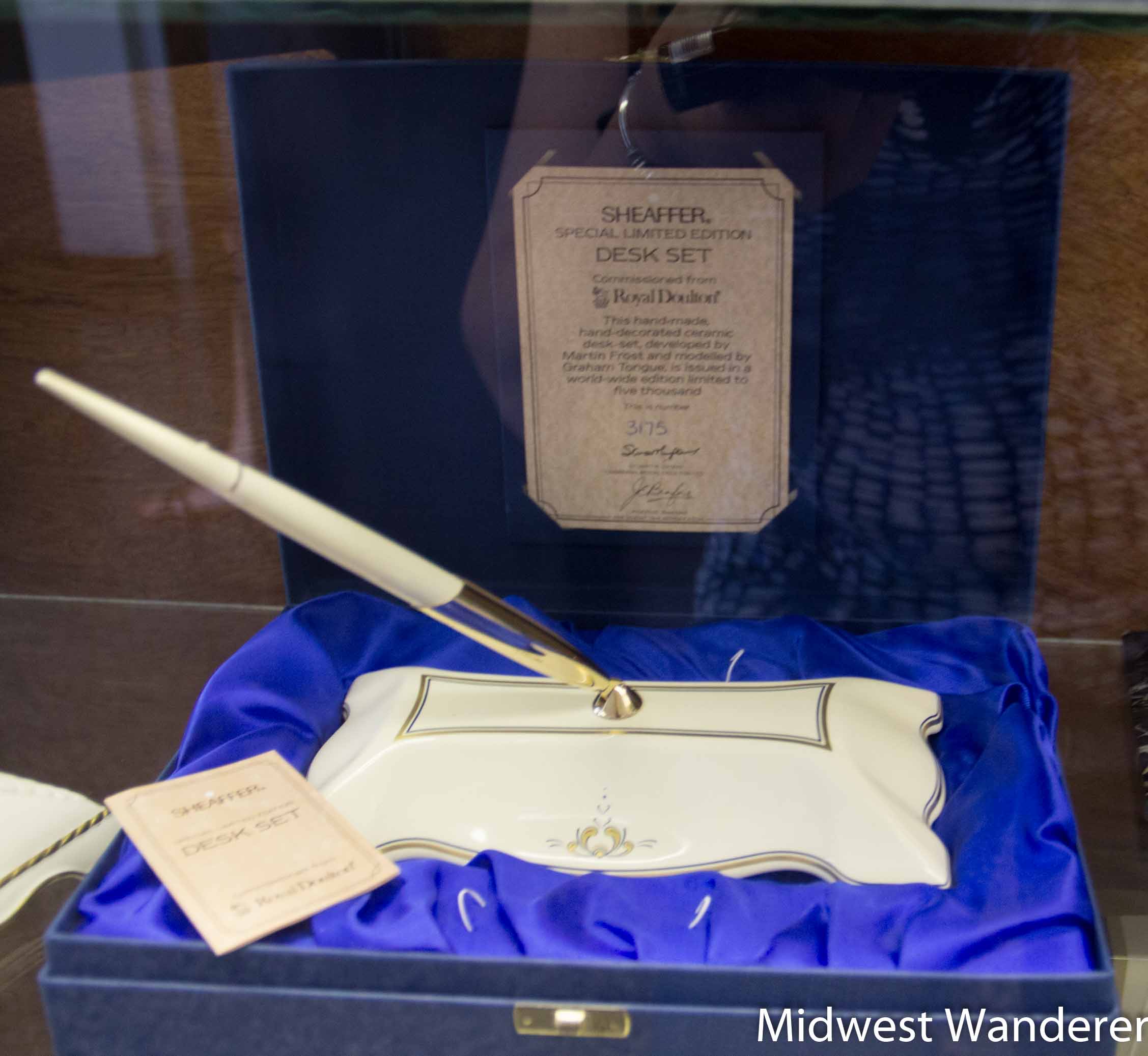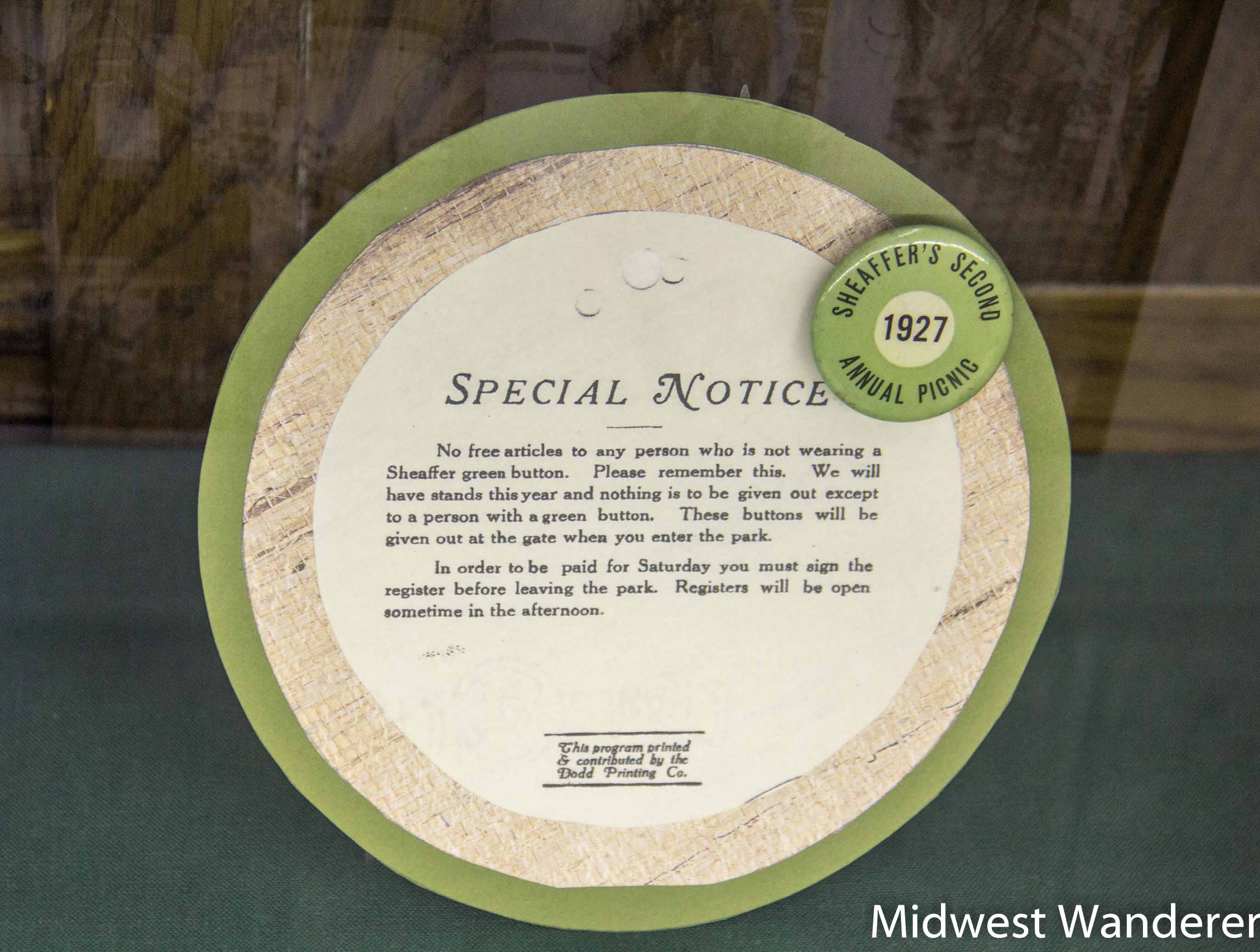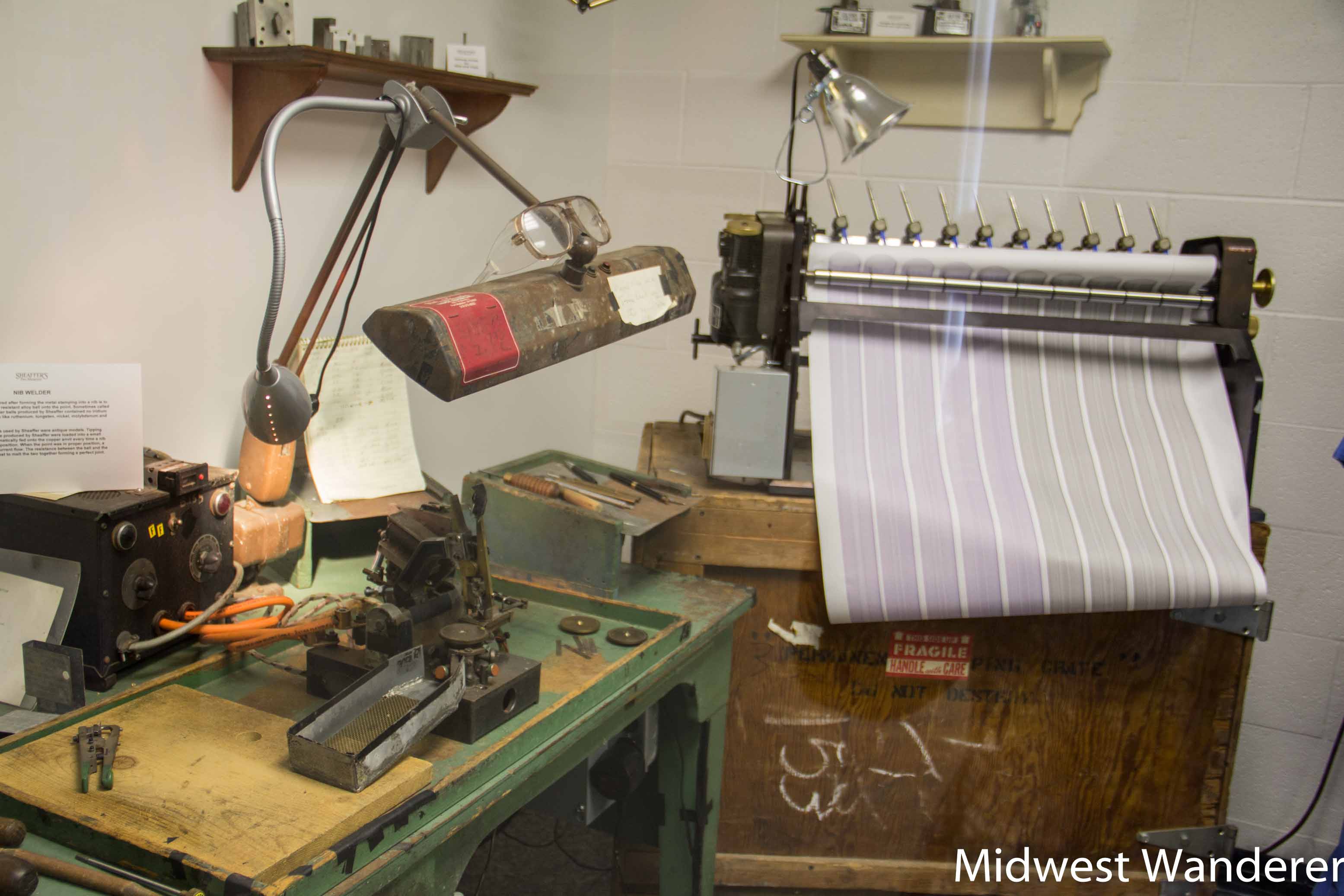Anyone who grew up in the 1960s, or earlier, was required to use a fountain pen in school. I remember how excited I was when I got to the fourth grade and was allowed to use a pen instead of a pencil, sort of a right of passage. In the 1960s we used Sheaffer cartridge fountain pens, never a ballpoint pen. The nuns insisted that the nib on a fountain pen taught you proper, flowing penmanship. I hadn’t seen a Sheaffer cartridge pen in years until my visit to the Sheaffer Pen Museum in Fort Madison, Iowa.
Besides the wave of nostalgia, I had learned lots of fun trivia facts at the Sheaffer Pen Museum, as our docent, Judy, filled us in on the W.A. Sheaffer Pen Company history. Here are some of the things I learned:
- W.A. Sheaffer’s father was a jeweler by trade. He had his hands in other businesses, as well, including insurance. He insured the City of Chicago. And then the Great Chicago Fire broke out. He lost both the insurance company and his jewelry store.
- W.A.’s first name was Walter. According to the family, the “A” didn’t stand for anything.
- W.A. developed the lever-fill pen. Before then, pens had to be refilled using an eyedropper. By the time I used a fountain pen, disposable cartridges were used instead of being lever-filled.
- Sheaffer pens have a signature white dot on them. The luxury pen shown below had a diamond in place of the white dot.
- The pen point (nib) was often made of 14-karat gold, even when they produced a budget line of pens.
- Starting in 1924, Sheaffer pens had a lifetime guarantee for the original owner. If a pen couldn’t be repaired, it would be replaced. In later years they guaranteed only the nib.
Don’t miss a Midwest Wanderer post. For a FREE subscription, enter your e-mail address in the Subscribe2 box to the right and click Subscribe.
- Employees in the nib production area wore smocks to catch gold shavings. The Pen Point department had its own bathrooms where the water was filtered to collect the gold. Smocks and rags used in the department were also laundered within the department to collect any cold residue.
- During World War II Sheaffer produced bomb fuses. The museum exhibits the one millionth bomb fuse produced.
- The company also produced radio tuners that could change radio communication frequency between airplanes and aircraft carriers every six seconds, so the enemy couldn’t follow the transmission.
- The Sheaffer Pen Company was the first to produce desk sets. When special desk sets were made for signing historical documents, two sets were made. One set would go into a museum. The other set would go back to Sheaffer for advertising.
- The Sheaffer Pen Company had a clubhouse for all employees that included a bowling alley. Until that time, women weren’t allowed in bowling alleys. They also had basketball courts, Christmas parties and company picnics. Employees were also paid to go to their company picnics.
- The plant that was built in 1952 had pipes underneath the sidewalks to melt the snow.
- A legend among area kids was that the plant’s water tower actually held ink.
Besides documents and collections of pens, the Sheaffer Pen Museum also has an automated exhibit that demonstrates the machine that was used to test the hardness in roller balls and the quality of the metal used in the nibs.
If you visit the Sheaffer Pen Museum
The Sheaffer Pen Museum, located at 627 Avenue G in downtown Fort Madison, Iowa, is open on Fridays and Mondays from 10 a.m. to 2 p.m. Visit the web site for further details.
Accommodations: I stayed at the Kingsley Inn during my visit to Fort Madison. Find the best deal, compare prices, and read what other travelers have to say at TripAdvisor.
**********
Disclosures: My visit to the Sheaffer Pen Museum was hosted by the Iowa Tourism Office and the Shaeffer Pen Museum but any opinions expressed in this post are my own.
This article contains an affiliate link, which means that if you book a room through this link, I will receive a small commission at no additional cost to you.
Thank you for reading Midwest Wanderer. Don’t miss a post. Enter your e-mail address below and click Subscribe to be notified whenever I publish another post. Subscription is FREE. After subscribing, be sure to click the link when you get the e-mail asking you to confirm. – Connie
